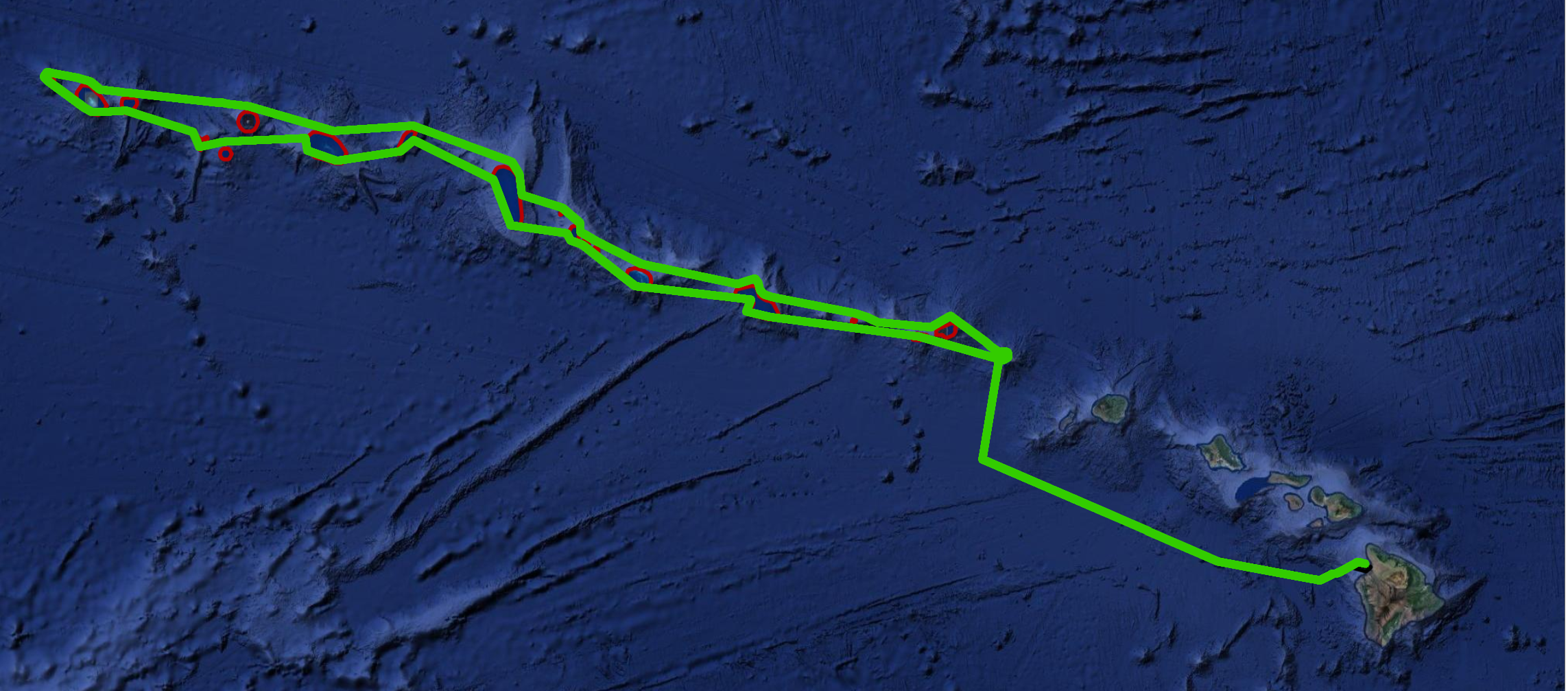Europa is nearing the shores of Ka Lae (ka-lie), or South Point, which is the southernmost tip of the Big Island and the United States. Archaeological excavations and Hawaiian tradition indicate Ka Lae, meaning “the point,” was the first place the early Polynesians occupied in Hawaii, as early as A.D. 124. The area is an official National Historic Landmark (NHL) because of its cultural significance and importance. Claiming this region as an NHL enables protection and preservation under the National Historic Preservation Act (NHPA).
Two prevailing currents converge off the coast of South Point: Kāwili and Hala’ea.The Kāwili, or the Hawaiian Lee Counter Current, flows from west to east all the way from Asia. This current is thought to have helped early Polynesians find the Hawaiian Islands while traveling from their original homeland: Kahiki.
The Hala’ea, also known as the North Equatorial Current, travels east to west by trade winds and is named after the greedy chief, Hala’ea. Oral histories and texts say Hala’ea ordered his men to throw all of their aku (tuna) into his canoe so he could claim all of the fish for himself. His men threw so many fish into his boat that it capsized, and he was swept out to sea by a strong current. Hence, the current bears his name.
The currents bring many nutrients and make the waters off Ka Lae abundant in fish. However, they also carry a vast amount of trash that piles up along the coastline. The majority of the waste is plastic, likely from the Great Pacific Garbage Patch carried by Hala’ea.
Since the first settlement of Polynesians, communities within Ka Lae have relied on fish as their prominent resource. In the 1950s, the University of Hawaii and the Bishop Museum excavated a site called Pu’u Ali’i. This location is thought to be one of the first dwellings in Ka Lae established by fishermen. Archaeologists found many different types of large fish hooks and tools to make them, including coral and stone abraders. Further excavations in Ka Lae revealed a fishing shrine (Ko’a) within the Kalalea Heiau. This shrine was created for the fishing god, Ku’ula, to maintain the abundance of fish. Other remaining cultural sites within the area are Lua o Palahemo, the Canoe Mooring Holes, and Lua Makalei.
The federal government manages NHL’s, and although it protects Ka Lae, it does not provide enough support on a local and state level. As environmental and cultural regimes continue to shift in Hawaii, significant stakeholders of Ka Lae (community members, the State of Hawaii, and the Department of Hawaiian Homelands) have recognized the need for additional preservation, conservation, and management efforts. Thus, since 2016, a new management plan has been underway that implements community-based management strategies of long-term land stewardship, and natural resource and cultural management.
Europa was able to swim past South Point without any issues from the currents as she traveled towards Mexico. We hope she doesn’t have any trouble as she passes it once more on her way home. Once she wraps around the point and gets north of Milolii (see map above), we plan to retrieve her with our vessel, the May Maru. She has approximately 80 nautical miles to go until retrieval. Track the rest of Europa's journey on our website and stay tuned for exciting new updates after HUMPACS concludes!













